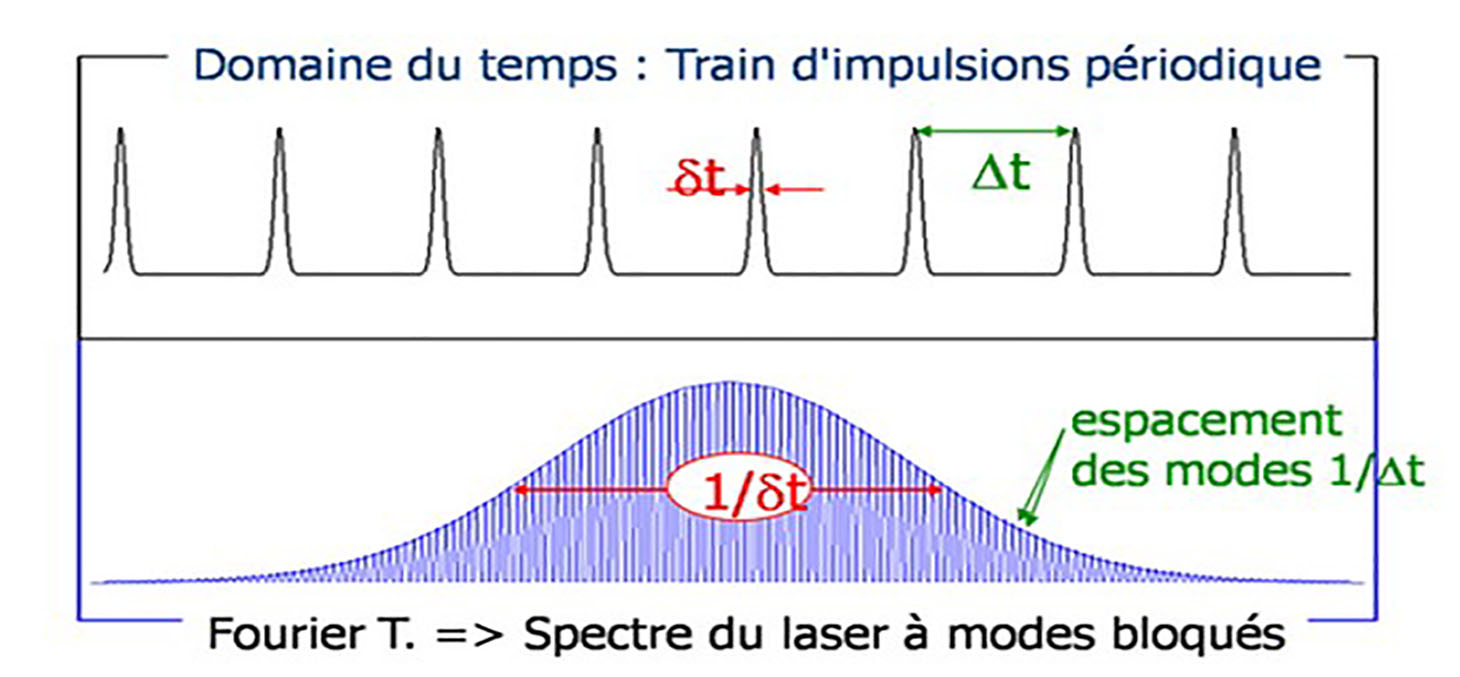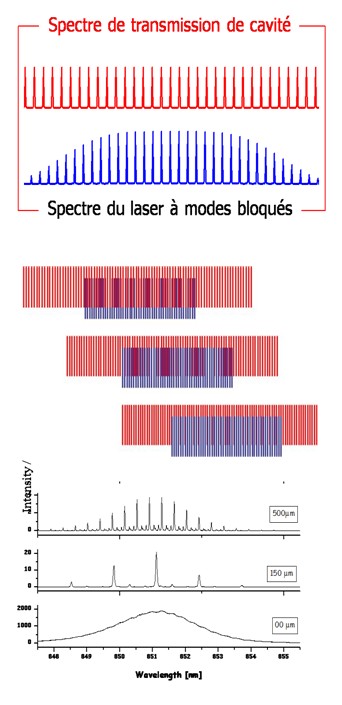- Share
- Share on Facebook
- Share on X
- Share on LinkedIn
A mode-locked laser emits short pulses, about 100 femtoseconds (1 fs = 10-15s), in our case, with an extremely stable repetition rate, around 80 MHz. The brevity of the pulses is due, if we think of the Fourier transform, to the width of the laser spectrum, about 10 nm. Still, if we think of the Fourier transform, we can understand that the periodicity of the pulses must be found in the frequency domain. This broad spectrum is, in fact, made up of a comb of modes (about 100,000 modes), spaced by 1/Δt, where Δt is the duration between two pulses.

Principle of the coupling of a femtosecond laser with a high finesse optical cavity
The spectrum transmitted by the cavity depends on the tuning between the mode-locked laser comb and the mode comb of the high finesse cavity.
The principle of the "ML-CEAS" is based on the tuning between these two mode combs. Indeed, when the length of the high finesse cavity is modified, beats of different periods are observed. The tuning between the two mode combs is done only on different mode groups more or less distant.
When the length of the high finesse cavity is exactly that of the laser, the mode combs are said to be "tuned", and the laser spectrum is transmitted without beats ! We are then at the "magic point". To stay at the magic point, different servo strategies are used.
Actors
Guillaume MÉJEAN
Daniele ROMANINI
Irène VENTRILLARD

- Share
- Share on Facebook
- Share on X
- Share on LinkedIn